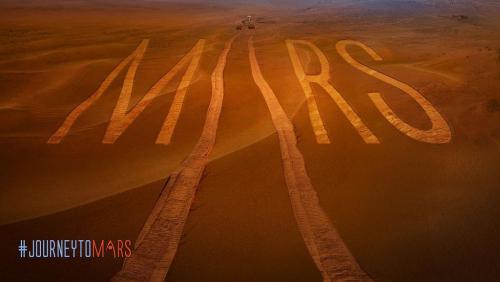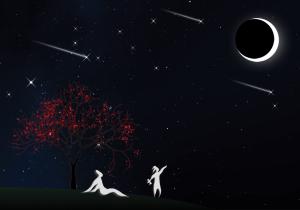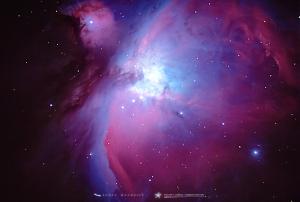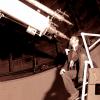Celebration of Space - August 30, 2019

In July 2020, NASA will launch the next generation Mars rover called Mars 2020. The rover will prioritize the search for past microbial life on Mars, as well as preparations for the coming human mission to Mars.
Hey K-12 teachers and educators, did you know that your students have a chance to name the Mars 2020 rover? Starting this past Wednesday, August 28, 2019, the contest to name the Mars 2020 rover is on. Until November 1, 2019, each student in your classroom can come up with a name and write a short essay (150 words maximum) about why their proposed name should be chosen. If the entries are submit before Nov 1, your students have a chance to win. The judging period will run from Nov – Jan, and will be based on three entry groups, designated by grade grade level (k-4, 5-8, 9-12). Judges will look for appropriateness, significance and originality, as well as quality of the accompanied essay. Fifty two semi-finalists will be selected from each group (one per US state / territory), with 3 finalists being selected from each group. The final selection process will happen in January 2020 with the chosen name being announced on February 18, 2020, one year before the rover will arrive at Mars. Teachers, you will need to sign up and create a class code for your students to register with, otherwise they cannot compete. Visit the Name The Rover Challenge page to learn about the competition and how to get your class involved. Who knows, you just may have the kid who names the next Mars rover, sitting in your classroom this year!
Tonight is the last event of our Summer Stargazing Nights program for the 2019 season. But this doesn’t mean that we are closing up for the year! The Frosty Drew Observatory will continue to open every Friday night through the autumn and winter, though our hours and offerings will change, just slightly. The most notable change will be the discontinuation of our solar viewing program, which happens at 6:00 pm every Friday from Memorial Day weekend thru Labor Day Weekend. Another change that will gradually happen will be less and less astronomers out each night as we move out of the “on-season”, which officially ends in early January. Starting next Friday, September 6, 2019, the Frosty Drew Observatory will commence our regular Stargazing Nights events, which open about 30 minutes after sunset. Once sunset starts occurring before 6:30 pm, we will open at 7:00 pm. Regarding our summertime Wednesday Stargazing Nights event, we are considering the possibility of continuing the offering through the autumn. Send us a reply to let us know if you think we should. We also have a few awesome special events lined up for the autumn season at Frosty Drew Observatory, including International Observe the Moon Night, Spooky Views - A Halloween Stargazing Experience, and The Transit of Mercury. You can keep up with upcoming Frosty Drew Observatory events at: https://frostydrew.org/events.
At Frosty Drew Observatory, our mind-blowing views of the Milky Way stretching overhead is a draw for thousands of visitors, whom descend onto the Frosty Drew campus every summer. But the Milky Way viewing season at Frosty Drew is quickly coming to a close, with our prime viewing season already well behind us for 2019. Though the Milky Way is not the only view that will blow your mind at Frosty Drew. Starting in autumn, the Andromeda Galaxy begins to rise over 45° in the ENE sky after sunset, eventually rising to zenith (top of the sky). Andromeda is the largest galaxy in the Local Group, a group of galaxies that the Milky Way galaxy is part of. The Andromeda Galaxy resides at about 2,500,000 light years distant, and is comprised of around 1 trillion stars. Andromeda is naked eye visible at Frosty Drew Observatory on nights with no Moon, and is the furthest celestial object we can see with the naked eye. The galaxy takes up about 6° of sky, or about the size of 6 Full Moons. As autumn starts departing New England, the stunning Orion Nebula starts to rise into the evening sky. The closest site of massive star formation to the Solar System, the Orion Nebula is a huge stellar nursery that resides at a distance of 1,400 light years, and is one of two naked-eye-visible star forming nebulae in the Northern Hemisphere. Views in the Frosty Drew telescopes will show fabulous wisps of hydrogen gas, alongside super bright blue newborn stars, which are lighting up and ionizing the hydrogen gas cloud. Though the summertime Milky Way is the big draw to Frosty Drew Observatory, those who have seen the Andromeda Galaxy or Orion Nebula at Frosty Drew will certainly speak to their greatness, a view that all should see at least once in their lives!
-Scott
- Author:
- Scott MacNeill
- Entry Date:
- Aug 30, 2019
- Published Under:
- Scott MacNeill's Columns



